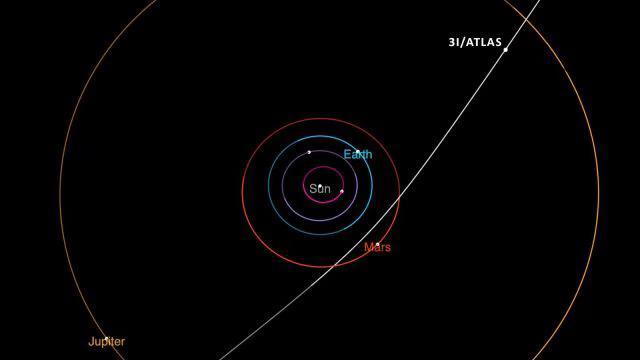
Interstellar Object 3I/ATLAS May be Alien Craft: Harvard Scientist
The possibility of extraterrestrial life has long been a topic of debate among scientists and the general public alike. While we have yet to find definitive evidence of alien life, a recent discovery has sparked renewed interest in the possibility of encountering other intelligent beings in the universe. Harvard astrophysicist Avi Loeb has suggested that an interstellar object, known as 3I/ATLAS, could be an alien craft rather than a natural body. This claim has sent shockwaves through the scientific community, with many experts weighing in on the potential implications of such a discovery.
What is 3I/ATLAS?
For those unfamiliar, 3I/ATLAS is an interstellar object that was first detected in October 2020 by the ATLAS (Asteroid Terrestrial-impact Last Alert System) telescope at the Mauna Loa Observatory in Hawaii. Since its discovery, scientists have been monitoring the object’s trajectory, and it has been confirmed to be larger than Manhattan Island, with an estimated diameter of around 1,000 feet (300 meters). Initially, NASA classified 3I/ATLAS as a comet, but Loeb’s recent suggestion has sparked debate about its true nature.
The Case for an Alien Craft
Loeb, a renowned astrophysicist and director of the Institute for Theory and Computation at Harvard University, has argued that 3I/ATLAS’s traits differ significantly from those of typical comets or meteors. According to Loeb, the object’s size, shape, and trajectory are inconsistent with what would be expected from a natural body. He suggests that the object’s unusual characteristics could be indicative of an artificial origin, such as an alien spacecraft.
One of the key arguments Loeb presents is the object’s unusual speed. Comets typically enter our solar system at a speed of around 20-30 kilometers per second, while 3I/ATLAS is moving at a much faster pace, approximately 26.3 kilometers per second. This increased velocity, combined with the object’s large size and unusual shape, has led Loeb to speculate that it may be a manufactured object designed to withstand the harsh conditions of space travel.
NASA’s Response
While Loeb’s theory has generated significant interest and debate, NASA has remained skeptical, classifying 3I/ATLAS as a comet that will remain at least 1.6 astronomical units away from Earth, posing no threat to our planet. NASA scientists have pointed out that the object’s composition is consistent with that of a comet, and its trajectory is consistent with what would be expected from a comet entering our solar system.
The Implications of an Alien Craft
If Loeb’s theory is correct, the implications would be nothing short of groundbreaking. The discovery of an alien spacecraft would be the first concrete evidence of extraterrestrial life, and would likely send shockwaves through the scientific community and beyond. It would also raise a host of new questions, including the possibility of intelligent life beyond our planet, and the potential for communication or even contact with other intelligent beings.
Conclusion
The discovery of 3I/ATLAS has sparked a heated debate among scientists and the public alike, with some arguing that it could be an alien craft, while others remain skeptical. While NASA has classified the object as a comet, Loeb’s theory has raised important questions about the possibility of extraterrestrial life. As we continue to monitor the object’s trajectory and gather more data, it is possible that we may learn more about its true nature. For now, the mystery of 3I/ATLAS remains, sparking our imagination and inspiring us to continue exploring the vast expanse of space.






